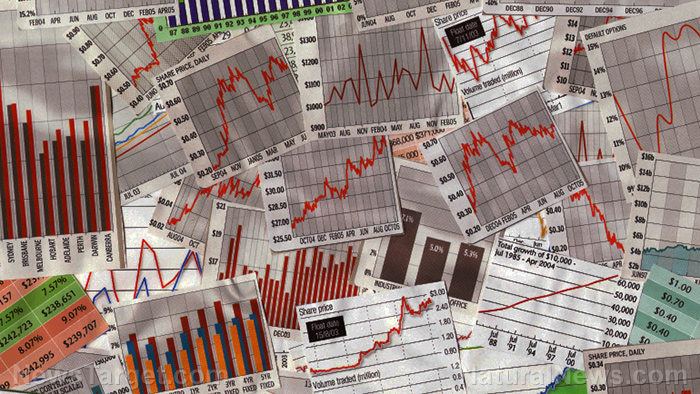Bitcoin advocates thought futures trading would make it skyrocket to $1 million, but this was actually a plot to pop the bubble
10/30/2019 / By Ethan Huff

Back in 2017, we issued a warning about the then-launch of Bitcoin futures, which threatened to open wide the floodgates for price manipulation. Well, it turns out we were right, as the former head of the U.S. Commodity Futures Trading Commission (CFTC) has come forward to reveal that it was actually the Trump administration that ended up doing the price-manipulating.
The purpose of Bitcoin futures, says Christopher Giancarlo, was to intentionally pop the Bitcoin bubble that at one point had reached about $20,000 per coin. As of this writing, Bitcoin is hovering around $9,200 per coin – less than half of its all-time high – and the cryptocurrency world has Trump to thank.
“One of the untold stories of the past few years is that the CFTC, the Treasury, the SEC (Securities and Exchange Commission) and the [National Economic Council] director at the time, Gary Cohn, believed that the launch of Bitcoin futures would have the impact of popping the Bitcoin bubble,” Giancarlo stated during a recent interview with CoinDesk.
“And it worked,” he added.
Giancarlo also threw out a few revelations at the recent Pantera Summit in San Francisco, during which he admitted that Bitcoin’s dramatic price increase leading up to December 2017 was the first major bubble since the infamous 2008 “recession.” And it was all because of efforts by the Trump administration, which he says utilized a “pro-markets” approach in countering the high price of Bitcoin.
“We saw a bubble building and we thought the best way to address it was to allow the market to interact with it,” Giancarlo is quoted as saying to the crowd, which had gathered at the Ritz-Carlton on Nob Hill.
For more related news about the collapse of Bitcoin, be sure to check out BitRaped.com.
The Federal Reserve also admitted that introducing Bitcoin futures was meant to drive down Bitcoin’s price
Giancarlo further cited research compiled by the San Francisco Federal Reserve, which similarly determined that the purpose of Bitcoin futures was to drive the price of Bitcoin back down into “realistic” territory.
“If you do believe it’s a ridiculous price but you don’t own (any Bitcoin), there’s no way to express that view,” Giancarlo told CoinDesk about how market “pessimists” had no say in the price of Bitcoin prior to the introduction of Bitcoin futures.
“If you don’t have that derivative, then all you’ve got are believers [and] it’s a believers’ market,” he added.
Other crypto experts agree that the exorbitant price of Bitcoin was heavily influenced by the fact that nobody was able to short the invisible asset during that time. This same is true for many other cryptocurrencies that similarly don’t have futures markets, and are thus exclusively influenced by “optimism.”
“The CFTC staff handled it strictly on procedural grounds, but at the leadership level I communicated with Treasury Secretary [Steven] Mnuchin and NEC Director Gary Cohn, and we believed that, should bitcoin futures go forward, it would allow institutional money to bring discipline to the value of the cash market,” Giancarlo further stated during his interview.
“And that’s exactly what happened.”
The question remains: Why didn’t this same thing happen prior to the 2008 financial crisis? Why were banks bailed out, rather than forcibly “popped?” And what about the over-inflated real estate market at that time? How come the Feds didn’t intervene on behalf of the American public to ensure that prices didn’t skyrocket to the point of a catastrophic deflation event?
Giancarlo says that these are “legit[imate] criticism[s].”
“Where were they during the expansion of the real estate mortgage bubble, and why didn’t they take steps to pop that bubble when they could have?” he’s quoted as asking rhetorically.
Sources for this article include:
Tagged Under: bitcoin, Bubble, crypto, cryptocurrency, economics, futures trading
RECENT NEWS & ARTICLES
COPYRIGHT © 2017 BUBBLE NEWS


















